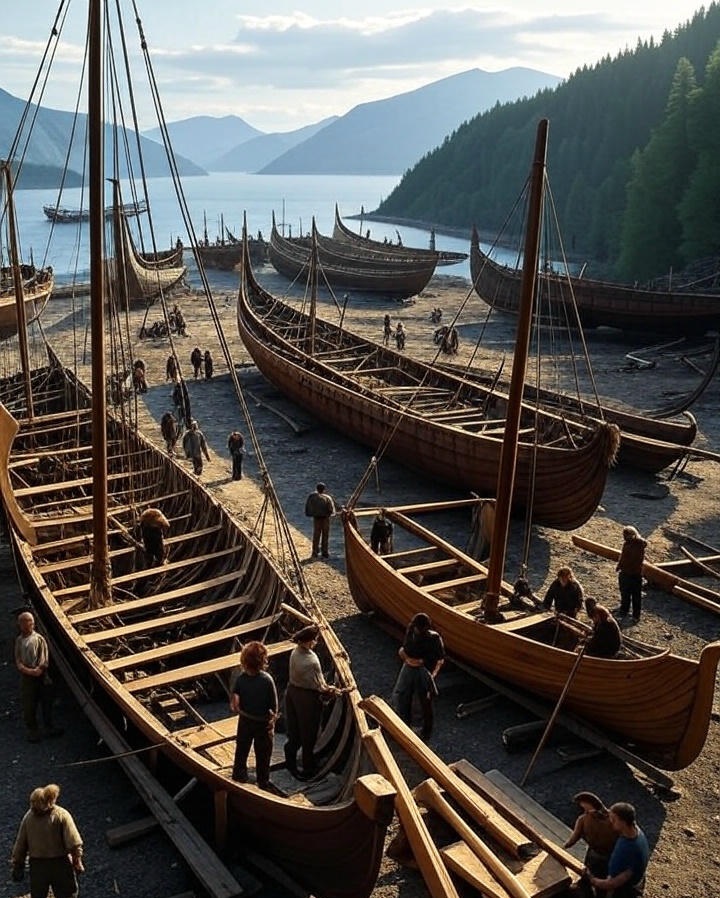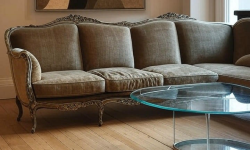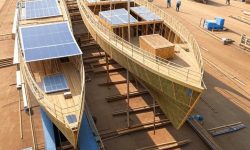
Shipbuilding, a craft vital to maritime triumph, is deeply influenced by the natural world. Landforms—forests, coastlines, rivers, and mountains—shape the resources, designs, and cultures behind ship construction. From Scandinavia’s rugged fjords to Southeast Asia’s lush deltas, geography drives the ingenuity of shipwrights, crafting vessels that rule the seas. This blog delves into how nature’s features have forged maritime mastery, highlighting human adaptation to diverse landscapes.
Forests as Shipbuilding Foundations
Forests supply the timber essential for traditional ships, with their type and quality determining vessel strength and design. Northern Europe’s oak and pine forests empowered Viking shipwrights. Oak’s robust grain enabled longships—sleek, flexible vessels that navigated turbulent seas and shallow rivers. These ships, central to Viking maritime triumph, endured harsh Atlantic conditions, illustrating how local landforms spurred innovation.
Southeast Asia’s tropical teak forests provided water-resistant wood, perfect for humid climates. India’s Chola dynasty harnessed teak to build fleets that controlled Indian Ocean trade, their resilience reflecting geography’s pivotal role. Forests, as landforms, delivered materials that shaped maritime supremacy across regions.
Coastal Contours and Vessel Design
Coastlines, sculpted by geological forces, dictate ship types. Norway’s rocky shores required vessels for treacherous waters, leading to clinker-built Viking longships with overlapping planks for flexibility. These agile ships fueled Norse exploration, transforming coastal challenges into maritime triumph.
The Mediterranean’s calm, shallow waters nurtured galleys—oar-powered ships for coastal trade. Venice’s flat, sandy shores supported their construction, prioritizing maneuverability over durability. Unlike the North Sea’s wind-driven ships, Mediterranean designs show how landforms tailored shipwrights’ craft to their environment.
Rivers as Shipbuilding Cradles
Rivers, crucial to ancient civilizations, fostered shipbuilding by offering shipyard sites and testing waters. Along Egypt’s Nile, abundant lotus plants were woven into lightweight vessels for commerce, paving the way for Red Sea maritime success. These early boats underscore how riverine landforms shaped shipbuilding traditions.
The Yellow River in China nurtured the development of sampans—versatile, flat-bottomed boats with adjustable sails for navigating rivers and coastal waters. Bamboo and cedar from its banks drove innovations like watertight compartments, later adopted globally. Rivers, as landforms, provided resources and inspired technologies that propelled maritime achievements.
Mountains and Resource Constraints
Mountains, often limiting timber, compelled shipwrights to innovate. Greece’s sparse forests led to triremes—compact warships built with precision to conserve wood. This resourcefulness secured maritime triumph at battles like Salamis, driven by landform-imposed scarcity.
Japan’s mountainous terrain restricted wood, resulting in lightweight kobaya ships for coastal defense. Crafted with highland cedar, these vessels emphasized efficiency, showing how mountains, as landforms, both challenged and sparked shipbuilding creativity.
Harbors and Shipyard Growth
Natural harbors, formed by coastal landforms, are essential for shipbuilding, providing sheltered spaces for continuous work. Scandinavia’s fjord-like harbors supported Viking longship construction, enabling Norse exploration. Portugal’s Lisbon harbor, at the Tagus estuary, produced caravels—nimble ships for oceanic voyages, embodying maritime triumph.
Regions with exposed coasts, like West Africa, adapted by crafting portable dugout canoes, suited to turbulent surf. These simple vessels, carved from logs, demonstrate how landforms—lacking harbors—shaped resilient maritime traditions.
Climate’s Role in Material Choice
Climate, linked to geography, influences shipbuilding materials. Britain’s wet climate preserved oak, treated with tar for moisture resistance, enabling galleons that dominated Elizabethan seas. This temperate environment supported large-scale shipbuilding, underpinning maritime triumph.
In arid Middle Eastern regions, scarce timber led to dhows—lightweight ships with lateen sails, built from imported woods or palm fronds. Climate, shaped by landforms, drove shipwrights to create practical, innovative vessels for local conditions.
Cultural Impacts of Geography
Landforms shape maritime cultures, influencing shipbuilding priorities. Polynesian islanders, surrounded by ocean, crafted double-hulled canoes from breadfruit trees for long voyages, achieving Pacific maritime triumph through sea expertise. Their designs reflect a culture molded by isolated landforms.
The North Sea’s low, wooded shores supported the Hanseatic League’s merchant-focused hulks—sturdy, cargo-laden vessels for Baltic trade. These ships, built with plentiful timber, highlight how landforms embed maritime values into shipwrights’ work.
Modern Shipbuilding and Geography
Geography continues to shape modern shipbuilding, though technology eases some constraints. South Korea’s deep-water ports and steel access fuel its shipyard dominance. Coastal nations like Norway leverage historical expertise for advanced vessels, proving landforms’ lasting role in maritime triumph.
Conclusion
Landforms—forests, coastlines, rivers, mountains, and harbors—have molded shipbuilding for centuries, guiding materials, designs, and cultures. From Viking longships to Chola fleets, Egyptian lotus boats to modern steel ships, nature’s influence is unmistakable. Shipwrights, as artisans of the sea, harness geography to craft vessels that conquer oceans, forging a legacy of maritime triumph through adaptation and ingenuity.










